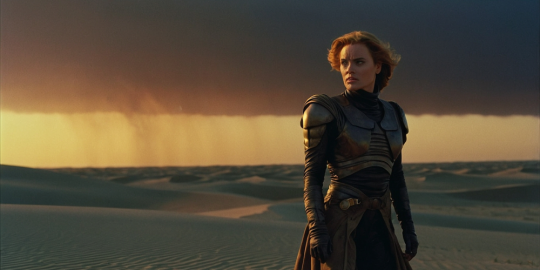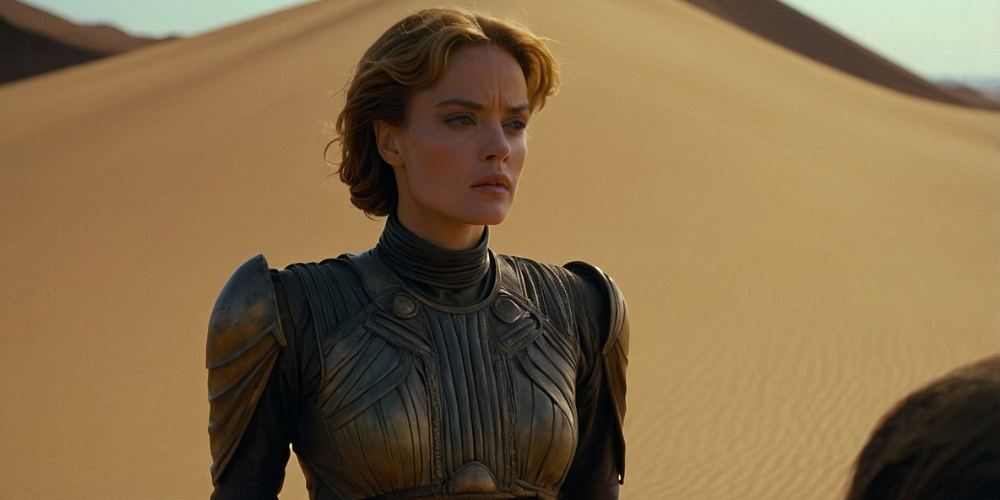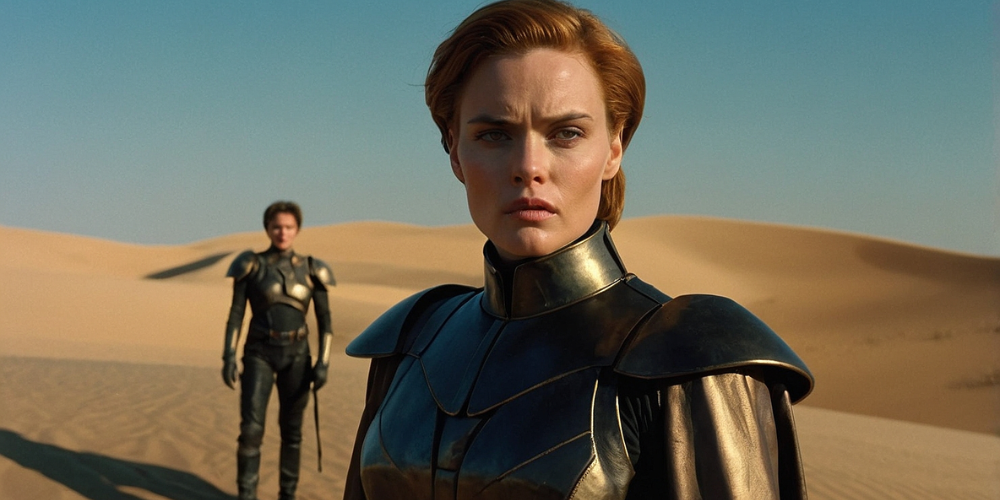
The eagerly anticipated sequel, Dune: Part Two, extends the expansive narrative tapestry woven by its predecessor. Directed by Denis Villeneuve, this film embraces a methodical artistry that pushes the boundaries of visual storytelling and cinematography. The film's aesthetic reflects both the intimate struggles of its characters and the grand scale of its universe, allowing audiences to immerse themselves in the rich world of Arrakis. Villeneuve’s vision for the sequel transcends mere adaptation; it represents an artistic evolution in cinematic language that resonates powerfully with the themes of Frank Herbert’s timeless classic.
Color and Contrast as Narrative Devices
Dune: Part Two showcases a vibrant palette that contrasts the desolate beauty of Arrakis with the oppressive confines of political power. The cinematographer, Greig Fraser, employs color both to define geography and to signal the emotional undertones of scenes. Warm earth tones and vivid golds symbolize the life-giving qualities of spice, whereas cooler hues emerge in moments of conflict, underscoring the impending dangers faced by Paul Atreides and his companions. The precision in color grading reflects the duality of beauty and brutality that characterizes the film's narrative.
Framing and Composition
The sophisticated use of framing nuances in Dune: Part Two guides viewers’ eyes and emphasizes character dynamics. Wide shots are frequently employed to convey the grandeur of the desert landscapes, serving as a foreboding backdrop against which human drama unfolds. Close-ups, on the other hand, capture the raw emotions of characters, inviting audiences to connect on a deeper level. The deliberate use of negative space invites contemplation and reinforces the isolation of the protagonist as he grapples with destiny and duty.
Dynamic Camera Work
Movement within the frame contributes significantly to the film's visual impact. The camera actively engages in the narrative, employing smooth motions that reflect the rhythm of the story. Steadicam shots create an intimate feel during emotional exchanges, while sweeping crane shots amplify the scale of epic battle sequences. The varied pacing of camera techniques reflects the often-unpredictable tension present in the storyline.

Symbolism and Visual Allegory
Symbolism thrives within the visual framework of Dune: Part Two. Every element from the architecture of the cities to the attire of the characters serves a purpose beyond mere aesthetics. The distinctive designs of the Fremen's dwellings, for instance, represent their deep connection to the land, while the monstrous sandworms signify the duality of nature - a source of life and a harbinger of destruction. Such visual allegories create layers of meaning that enrich the narrative without the need for explicit exposition.
Utilizing Practical Effects and Sets
Denis Villeneuve emphasizes the authenticity of practical effects and set design. This realistic approach grounds the film in a palpable world, enhancing the viewers' belief in the impossible. Stunning locations, meticulously crafted miniatures, and tangible environments ensure that each scene resonates with visceral intensity. The sand dunes of Arrakis, for instance, are not merely a backdrop, but a living entity that influences the narrative's flow and the protagonist's journey.
Integration of Visual Effects
The harmony between practical effects and CGI in Dune: Part Two is masterfully executed. While practical effects build a strong foundation, digital enhancements breathe life into otherwise fantastical elements, such as the sprawling sandworms and spacecraft. This blend of real and virtual caters to the physicality of the film’s storytelling, making the surreal appear believable. The seamless integration of these technologies emphasizes the sheer scale of the environment without overshadowing the human elements at play.
Sound Design and Its Visual Synergy
The auditory landscape complements the visual style, creating a holistic sensory experience. Hans Zimmer’s score features sweeping melodies that evoke the vastness of the dunes, intricately woven with the industrial noises of spaceships and machinery. The juxtaposition of serene soundscapes with sudden, jarring sounds parallels the visual contrasts presented in the film, maintaining viewer engagement and heightening emotional stakes.
Character-Driven Lighting
Lighting plays a pivotal role in character development throughout Dune: Part Two. The manipulation of light and shadow mirrors the internal conflicts faced by the characters. Soft, natural light often envelops Paul Atreides in moments of introspection, while harsher lighting highlights his struggles in the darker political landscape. This thoughtful application of light allows the emotion to resonate beyond dialogue, guiding audiences to a deeper understanding of the characters’ complexities.

Choreography of Action Sequences
Action sequences in Dune: Part Two are not only visually striking but also intricately choreographed. Villeneuve ensures that each movement serves a purpose, often reflecting the overarching themes of fear, survival, and sacrifice. Using a blend of martial arts and raw physicality, the film's fight scenes stand distinct from conventional blockbusters. Each clash presents a dance of life and death, captured in fluid motion, and drawing viewers into the tension of the moment.
Monumental Set Pieces
Every set piece is crafted to evoke awe while enhancing the storytelling. The intricacies of the Desert Fortress or the grandeur of the capital city reflect the intricate hierarchy and cultural heritage of its inhabitants. Focusing on the finer points enhances the engaging experience; spectators become more than mere bystanders, instead taking an active role in the evolving narrative. The significance of each location reverberates with the narrative, showcasing how environment shapes character and story.
Emotional Engagement through Visuals
The visual style in Dune: Part Two transcends traditional storytelling. Villeneuve employs dramatic lighting, careful framing, and symbolic imagery to provoke emotional responses. The film evolves from mere spectacle to a profound exploration of its characters' emotional landscapes. Audience members are encouraged to explore both the internal and external struggles faced by the main characters, fostering a bond that lingers well past the end of the film.
Influences from Art and Cinema
Dune: Part Two draws inspiration from a variety of artistic movements and cinematic styles. The influence of German expressionism can be detected in its use of stark contrasts and abstract environments, allowing the emotional backdrop to overshadow the literal geography. Additionally, nods to classic sci-fi visuals forge a bridge between the past and present, reinvigorating familiar tropes while enriching the story with fresh interpretations.
Costume Design and Visual Identity
The costume design in Dune: Part Two forms a crucial component of the visual storytelling. Each character’s attire is meticulously designed to reflect their cultural heritage and societal status. The Fremen wear practical, form-fitting garments that emphasize their integration with the environment, while House Atreides showcases regal attire reflecting their nobility and complex internal struggles. These visual cues ground characters in their roles within the narrative, heightening emotional stakes through visual identity.
The Interplay of Themes through Visual Technique
Villeneuve's directorial style in Dune: Part Two fosters an insightful interplay of themes such as power, destiny, and ecological balance. The carefully curated visuals highlight the stark contrasts between different factions and philosophies, weaving a tapestry of ideological conflict and personal growth. As the film unfolds, its visual style remains in constant dialogue with its themes, reinforcing the intricate relationship between character motivations and their environments.
Legacy of Visual Storytelling
Dune: Part Two aspires to redefine cinematic standards in visual storytelling. By integrating advanced techniques with careful artistic direction, the film transcends genre conventions. Its unique approach invites not only fandom but also critical contemplation of visual narrative functions. The film ultimately carries the prestige of traditional storytelling, all while forging new dimensions that broaden the scope of cinematic expression.